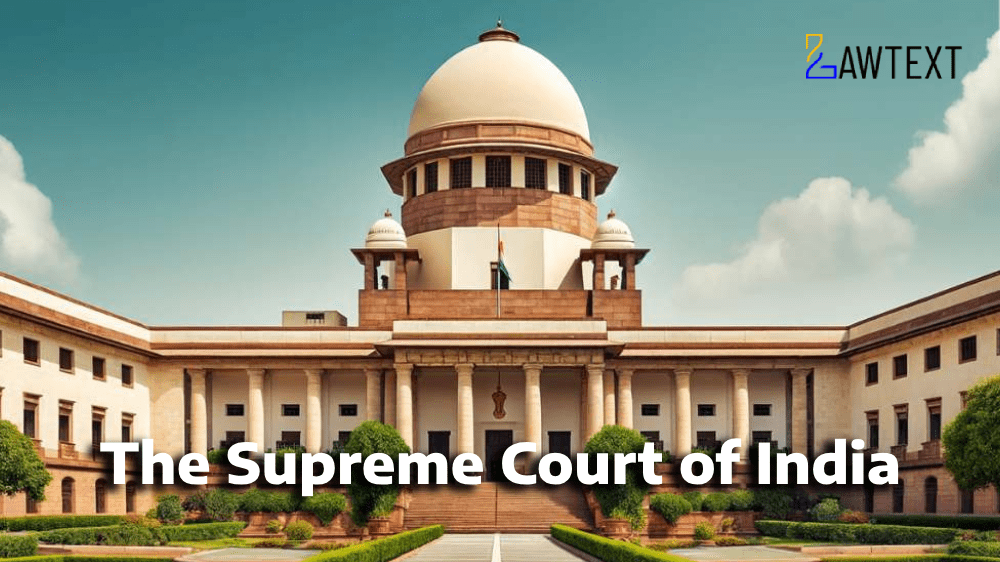CASE NOTE & SUMMARY
The Supreme Court of India addressed a significant dispute regarding the distribution of legislative powers between the Union and the States, specifically concerning the taxation of mineral rights. The case focused on whether royalty on minerals, as outlined under the Mines and Minerals (Development and Regulation) Act (MMDR Act), should be considered a tax and whether State legislatures can impose taxes on mineral-bearing lands by using the value of minerals as a tax base. The Court examined the inter-relationship between various constitutional entries related to mines and minerals and provided clarity on the limitations imposed on State taxation powers.
A. Background
- Overview: The case involves the interpretation of legislative powers concerning taxation on mineral rights and the imposition of royalties under the MMDR Act. The conflict arose from differing judicial interpretations, particularly between the decisions in India Cement Ltd. v. State of Tamil Nadu and State of West Bengal v. Kesoram Industries Ltd.
B. Issues
- Core Questions: The Court rephrased the central questions, focusing on whether royalty constitutes a tax, the extent of the State's taxing power under Entry 49 of List II, and the implications of limitations imposed by Parliament under Entry 50 of List II.
C. Submissions
- Petitioners’ Arguments: Petitioners argued that royalty is a form of tax, and the State legislatures have limited power to tax mineral rights due to the MMDR Act's comprehensive regulation.
- Respondents’ Arguments: Respondents contended that royalty is not a tax, and States can impose taxes on mineral-bearing lands under Entry 49 of List II.
D. Distribution of Legislative Fields Relating to Mines and Minerals
- Legislative Entries: The Court analyzed the distribution of legislative powers between the Union and States regarding the regulation and taxation of mines and minerals, focusing on the scope and limitations of Entries 23, 49, and 50 of List II.
E. Underlying Constitutional Philosophy
- Interpretation of Legislative Entries: The judgment explored the interpretation of legislative entries and the principle of fiscal federalism, emphasizing the importance of balancing Union and State powers.
F. Whether Royalty is Tax
- Nature of Royalty: The Court examined whether royalty under the MMDR Act qualifies as a tax, analyzing its characteristics and the legal implications of treating it as such.
G. Inter-relationship Between Entries
- Entries 23 and 54: The Court explored the relationship between Entry 23 of List II (regulation of mines) and Entry 54 of List I (mineral development), determining the extent of State powers in relation to the MMDR Act.
H. Conclusions
- Final Rulings: The judgment provided clarity on the nature of royalty, the extent of State legislative powers, and the limitations imposed by the Constitution on the taxation of mineral rights, resolving long-standing judicial ambiguities.
Citation: 2024 LawText (SC) (7) 251
Case Number: Civil Appeal Nos. 4056-4064 of 1999 With Civil Appeal No. 7937 of 2019 With Writ Petition (Civil) No. 512 of 2018 With Civil Appeal No. 7938 of 2019 With Civil Appeal No. 7936 of 2019 With Civil Appeal No. 6221 of 2008 With Civil Appeal No. 5250 of 2019 With Writ Petition (C) No. 729 of 2019 With Writ Petition (C) No. 1029 of 2019 With Special Leave Petition (C) No. 16028 of 2021 With Civil Appeal No. 4286 of 2023 With Civil Appeal No. 5682 of 2007 With Civil Appeal No. 1295 of 2008 With Civil Appeal No. 874 of 2013 With Civil Appeal Nos. 8269-8271 of 2013 With Civil Appeal No. 8268 of 2013 With Civil Appeal No. 8267 of 2013 With Civil Appeal No. 6135 of 2013 With Civil Appeal No. 8272 of 2013 With Civil Appeal No. 9458 of 2013 With Special Leave Petition (Civil) No. 18600 of 2013 With Civil Appeal No. 4332 of 2013 With Civil Appeal No. 5329 of 2002 With Civil Appeal No. 4993 of 2006 With Civil Appeal No. 8273 of 2013 With Civil Appeal No. 8274 of 2013 With Civil Appeal No. 3869 of 201
Date of Decision: 2024-07-25
Case Title: Mineral Area Development Authority & Anr. Versus M/S Steel Authority of India & Anr Etc.
Before Judge: [Dr Dhananjaya Y Chandrachud CJ.I , Hrishikesh Roy J. , Abhay S Oka J. , J B Pardiwala J. , Manoj Misra J. ,Ujjal Bhuyan J., Satish Chandra Sharma J. , Augustine George Masih J. B.V. NAGARATHNA J. ]
Appellant: Mineral Area Development Authority & Anr.
Respondent: M/S Steel Authority of India & Anr Etc.

